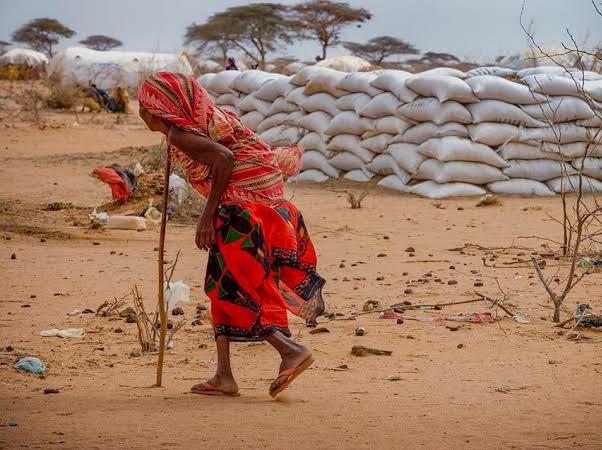NAIROBI,Kenya, Sep, 8 – At least two million Kenyans have been affected by the ongoing drought with the number expected to increase in the coming months partly due to rainfall shortage in various parts of the country.
In bid to mitigate the situation, president Uhuru Kenyatta has declared drought, that is affecting parts of the country a national disaster. Consequently, the President has instructed the National Treasury and the Ministry of Interior and Coordination of National Government to spearhead Government efforts to assist affected households including water and relief food distribution as well as livestock uptake.
“More details of the Government’s comprehensive drought mitigation measures will be unveiled in due course,” said State House Spokesperson Kanze Dena Mararo in statement.
Kenyatta Wednesday met with 85 leaders from Kenya’s Arid and Semi Arid Lands (ASAL) led by Treasury Cabinet Secretary Ukur Yatani.
10 counties have so far been identified as being in the ‘red zone’ of the ongoing drought. They include:Garissa, Isiolo, Kilifi, Mandera, Samburu, Tana River, Wajir, Lamu, Marsabit and Turkana.
The National Drought Management Authority (NDMA) revealed that Kenya is set to face devastating drought across the country as a result of harsh weather conditions and limited rainfall between August and December 2021.
In a bid to ensure that Kenyans ultimately benefit from a government programme targeting those affected by the ongoing drought, the distribution of relief food programme has been scrapped. In turn, the government has now instituted a monthly cash transfer programme.
According to Devolution Cabinet Secretary Eugene Wamalwa, distribution of food aid was, “tedious and ineffective and faced several challenges compared to the cash transfer model,”
“We have decided to move away from distribution of food relief and we shall instead focus on cash transfer and the Cabinet has formed a multi-agency team to address this,” said Wamalwa.
The government is expected to release cash through the Relief Assistance Management Information System (RAMIS).
“Currently we have over 2m people that have been affected by drought mainly in Arid and Semi-Arid regions and we are working with the affected counties to support them,” he said.
Beneficiaries of the first phase of the programme including Wajir, Mandera, Turkana, Marsabit and counties under the Hunger Safety Net Programme (HSNP) are expected to receive their money by monday next week.
Already Sh558 million has been sent to Equity Bank by the government to ensure the programme is s success.
Counties under the Hunger Safety Net Programme (HSNP) have since been increased from four to eight.
“The government will in a couple of weeks release Sh2B under the national drought emergency fund to support the ongoing interventions,” he said.
Under the RAMIS programme families are expected to receive Sh4,000 on a monthly basis.
The devolution ministry is working with the World Food Programme and National drought management authority by harmonizing their data in order to avoid cases of double allocation.
Also, the Food and Agriculture Organization (FAO) as well as the European Union (EU) have committed Sh1.5 billion and Sh500 million respectively towards water tracking and water provision to the affected communities.
Want to send us a story? Contact Shahidi News Tel: +254115512797 (Mobile & WhatsApp)


